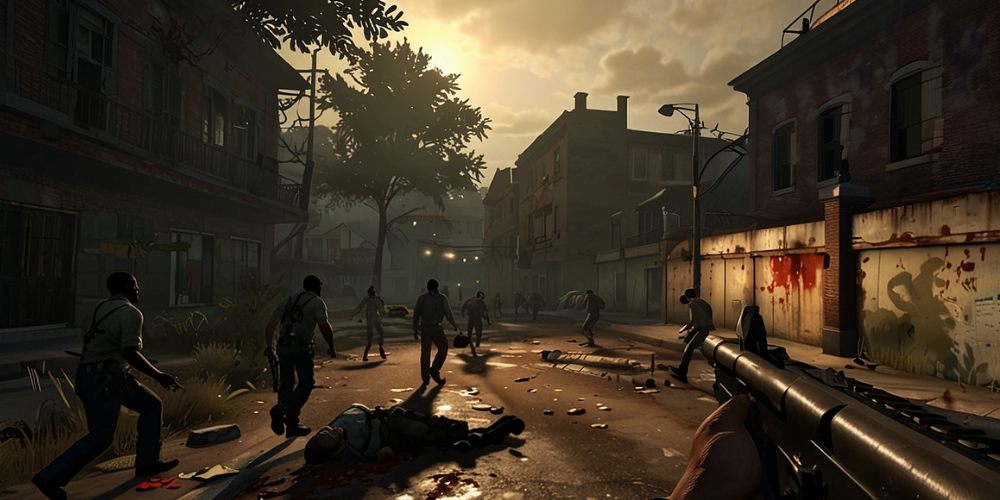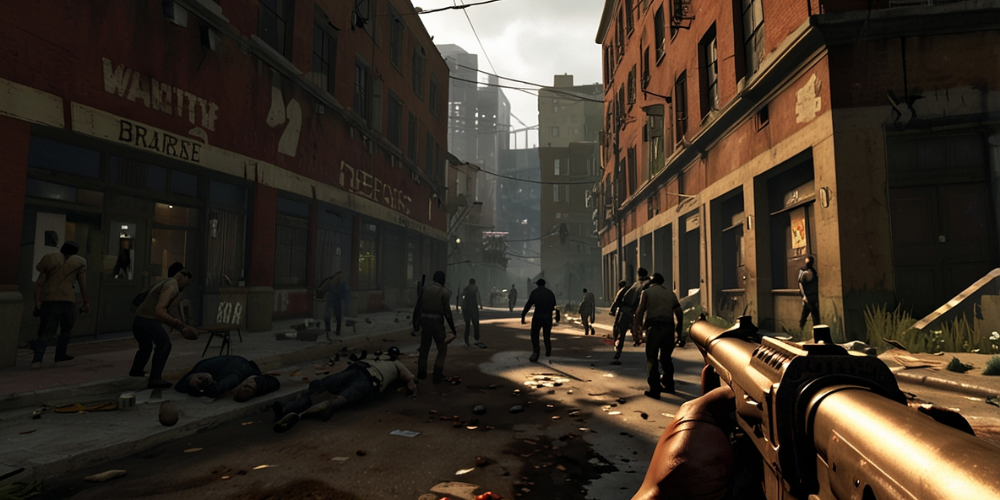The Cooperative Gameplay of Left 4 Dead 2: Collaboration, Strategy, and Survival
- Oct 28, 2024
- 1018

Left 4 Dead 2 is one of the most iconic cooperative multiplayer games ever made, offering a thrilling blend of teamwork, strategy, and fast-paced zombie action. As a player, I was part of a four-person team, battling through hordes of infected in a series of tense, high-stakes campaigns. What set Left 4 Dead 2 apart from other shooters was its focus on cooperative gameplay, where success depended on communication, coordination, and quick decision-making. For me, Left 4 Dead 2 was one of the most rewarding cooperative experiences in gaming, as it pushed me and my teammates to work together in the face of overwhelming odds.
The Importance of Teamwork
At the heart of Left 4 Dead 2’s gameplay is teamwork. Each campaign was designed to force players to rely on one another, whether it was reviving a downed teammate, sharing health packs, or covering each other during intense firefights. The AI Director in the game guaranteed that each playthrough offered a unique experience, as it adjusted the positioning of foes, weapons, and items in real-time according to how well the team was doing. This unpredictability made teamwork even more crucial, as we had to adapt to new challenges on the fly. For me, the focus on teamwork made every session of Left 4 Dead 2 feel exciting and unpredictable.
Special Infected and Strategic Challenges
Left 4 Dead 2 introduced a variety of special infected enemies, each with unique abilities that forced teams to adapt their strategies. The Charger, for example, could charge through the group and separate players, while the Spitter created hazardous acid pools that required quick movement. These unique infected introduced an additional strategic element to the gameplay, as they would focus on lone players or throw off the team's positioning. For me, the introduction of special infected kept the gameplay fresh and challenging, as we had to constantly adjust our tactics to deal with new threats.
The AI Director and Dynamic Gameplay
One of the standout features of Left 4 Dead 2 is its AI Director, a system that dynamically adjusts the game’s difficulty and pacing based on the team’s performance. If we were doing well, the AI Director would throw more enemies at us, or place special infected in more dangerous positions. If we were struggling, it might provide extra health packs or slow down the enemy spawns. This dynamic difficulty system made each playthrough feel unique, as no two games were exactly the same. For me, the AI Director added an element of surprise and tension to the gameplay, as I never knew what to expect next.
Weapon Variety and Customization
Left 4 Dead 2 provided an extensive selection of weapons, ranging from shotguns and assault rifles to melee options like axes and baseball bats. Each weapon had its own strengths and weaknesses, and choosing the right loadout was crucial for surviving the different challenges of each campaign. The game also allowed for some weapon customization, such as adding laser sights or incendiary ammo, giving me the flexibility to tailor my gear to the situation at hand. For me, the variety of weapons and customization options added depth to the gameplay, allowing me to experiment with different strategies and approaches.
Cooperative Campaigns and Narrative
Each campaign in Left 4 Dead 2 was designed as a cooperative experience, with a narrative that unfolded as we progressed through each level. The campaigns were filled with memorable set pieces, from holding out in a shopping mall to escaping a flooded city, and each one presented unique challenges that required teamwork and coordination. The narrative was delivered through in-game dialogue, environmental storytelling, and scripted events, adding a sense of urgency and immersion to the gameplay. For me, the cooperative campaigns were the heart of Left 4 Dead 2, offering a perfect blend of action, strategy, and story.

The Versus Mode: Competitive Cooperation
In addition to its cooperative campaigns, Left 4 Dead 2 also featured a competitive Versus mode, where one team played as the survivors and the other as the infected. This mode added a new layer of strategy, as the infected team could coordinate their attacks to disrupt the survivors and take them down. Playing as the special infected was a completely different experience, requiring teamwork and timing to ambush the survivors and split them up. For me, the Versus mode was a standout feature of Left 4 Dead 2, offering a competitive twist on the cooperative gameplay that made each match feel intense and unpredictable.
Survival and Scavenge Modes
Left 4 Dead 2 also offered additional game modes like Survival and Scavenge, which added new challenges and gameplay variations. In Survival mode, my team had to hold out against endless waves of infection for as long as possible, while Scavenge mode tasked us with collecting fuel cans to power a generator while fending off the infected. These modes added replayability and variety to the game, offering different ways to experience cooperative gameplay. For me, the additional modes were a great way to test my skills and teamwork in new and challenging scenarios.
The Atmosphere of Tension and Horror
Left 4 Dead 2 successfully created an atmosphere of tension and horror, with its dark environments, eerie sound design, and relentless enemies. The game’s use of lighting and sound played a crucial role in building tension, as the moans of the infected and the ominous music signaled the approach of danger. The atmosphere was further enhanced by the unpredictable nature of the AI Director, which kept me on edge throughout each campaign. For me, the tension and horror in Left 4 Dead 2 added to the excitement of the gameplay, making every encounter feel intense and nerve-wracking.

Replayability and Community Support
One of the key strengths of Left 4 Dead 2 is its replayability. The dynamic AI Director, variety of game modes, and competitive Versus mode ensured that no two playthroughs were ever the same. The game also had strong community support, with modders creating new campaigns, maps, and content that kept the experience fresh long after the game’s release. For me, the replayability of Left 4 Dead 2 was one of its biggest draws, as it offered endless opportunities for fun, challenge, and teamwork with friends.
The Legacy of Left 4 Dead 2
Left 4 Dead 2 has left a lasting legacy in the cooperative gaming genre, influencing countless other games that prioritize teamwork and coordination. Its blend of fast-paced action, dynamic gameplay, and strategic teamwork set a new standard for cooperative shooters, and its impact can still be seen in modern games today. For me, Left 4 Dead 2 remains one of the best cooperative experiences in gaming, offering a perfect balance of challenge, strategy, and fun. Its legacy continues to motivate developers to craft games that highlight the importance of teamwork and cooperation.